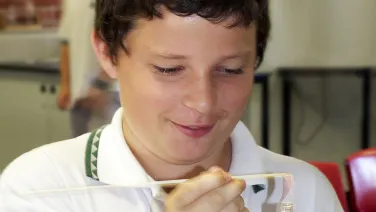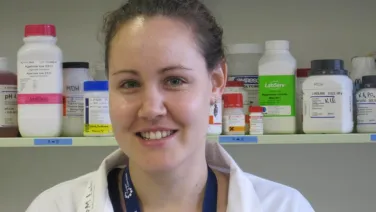
We use powerful biological resources provided by C. elegans to study aspects of nematode biochemistry, molecular biology and behaviour, and control methods.

The Brock lab loves membrane proteins; looking at them in atomic detail, discovering new drug molecules, and engineering them to create new biosensors. Join us!

We study membrane transport processes in the Plasmodium parasites that cause malaria.

The Maier Group focusses on the identification of molecules involved in malaria pathogenesis and transmission.

We are interested in the molecular mechanisms controlling nodule development in legumes, and how this is linked to other aspects of root architecture.

Our research actually spans may study systems and research questions. But the evolution of honey bee parasites and diseases and is a major focus.

The Saliba Group is investigating vitamin utilisation pathways in the red blood cell stage of the human malaria parasite Plasmodium falciparum.

We study the basic biology of parasites, with the hope that such knowledge can be used in developing new treatment options against these formidable foes.
The environment encountered by the malaria parasite in the mosquito is very different from the surrounding in the human host (temperature, available nutrients, immune system,....). We are looking at the necessary differentiation a malaria parasite undergoes before it can be taken up from human blood by the mosquito vector. These changes are irreversible and essential for transmission. A better understanding of these processes could provide clues how to prevent the transmission of malaria and therefore deliver additional instruments in the fight against this disease.
Design and evaluation of novel antimalarial drugs
Drug resistance in the human malaria parasite
Infection with the malaria parasite Plasmodium falciparum causes modifications of the erythrocyte membrane composition and rigidity. In particular protrusions of the red blood cell membrane are induced – so called knobs. These knobs are believed to provide an elevated platform and anchor point from which a major virulence factor is sticking out.
Australian honey bee populations will collapse after the recent establishment of Varroa mites. This project aims to track Varroa invasion and the subsequent evolution or resistance in feral honey bee populations. This is chance to participate in a once-in-a-lifetime natural experiment with national implications.
A significant proportion of Plasmodium falciparum proteins are being exported to the cytoplasm of the host red blood cell. On their way from the parasite to the red blood cell these proteins have to transverse several membranes. In order to cross the membranes the proteins have to be unfolded, translocated and refolded again on the other side.

The future of parasite research in Australia will be in safe hands as 16 young Australian scientists converged for an intensive 2-week workshop with world-leading biologists to study worms, protozoans, ticks, fleas, lice and more.

Scientists have released details of a raft of new chemicals with potent anti-malarial properties which could open the way to new drugs to fight the disease.

Australian native cuckoos are engaged in an arms race, competing with each other to take over other species’ nests.

Professor Kiaran Kirk has been appointed as the Dean of the ANU College of Medicine, Biology and Environment.

An anti-malarial treatment that lost its status as the leading weapon against the deadly disease could be given a new lease of life, with new research indicating it simply needs to be administered differently.